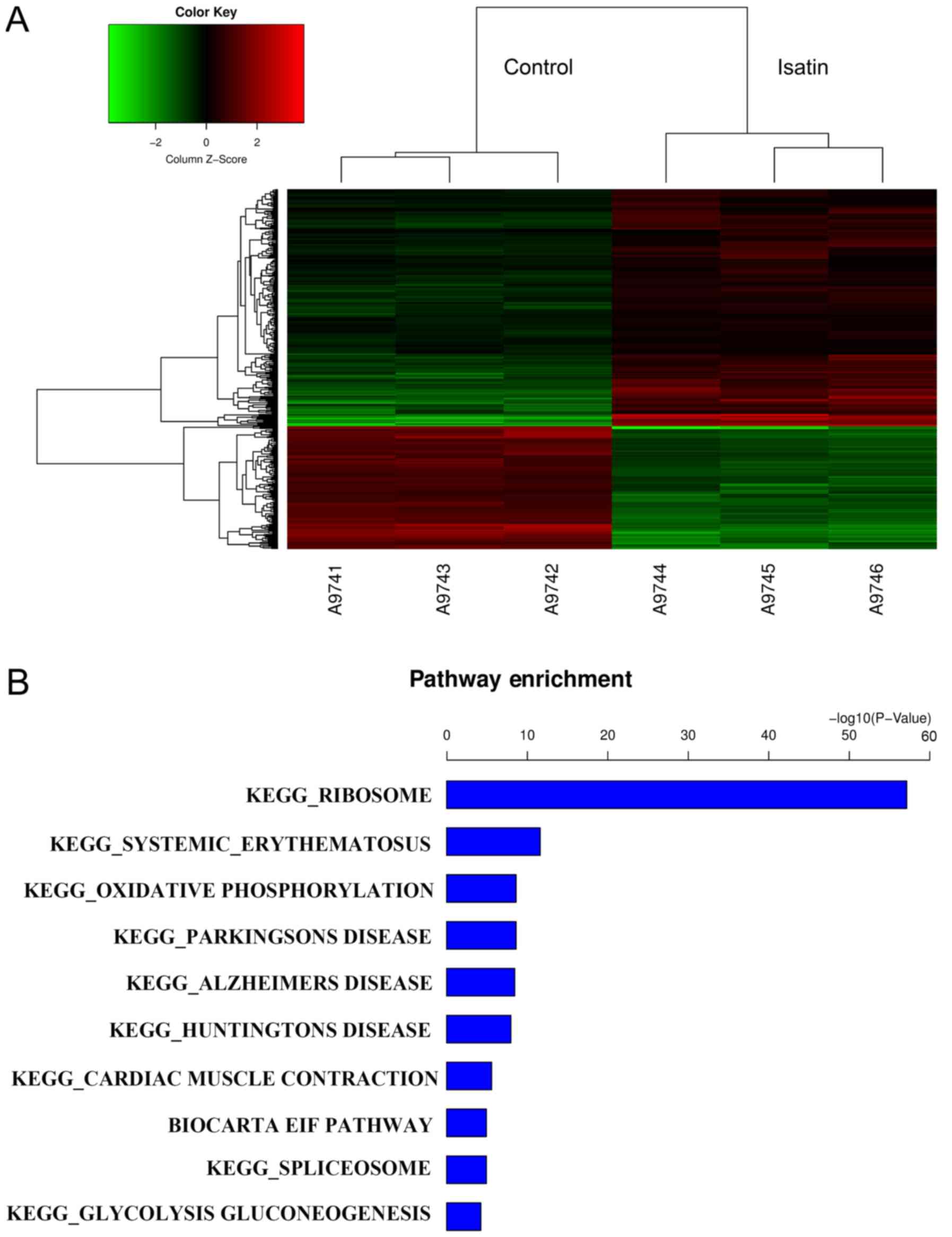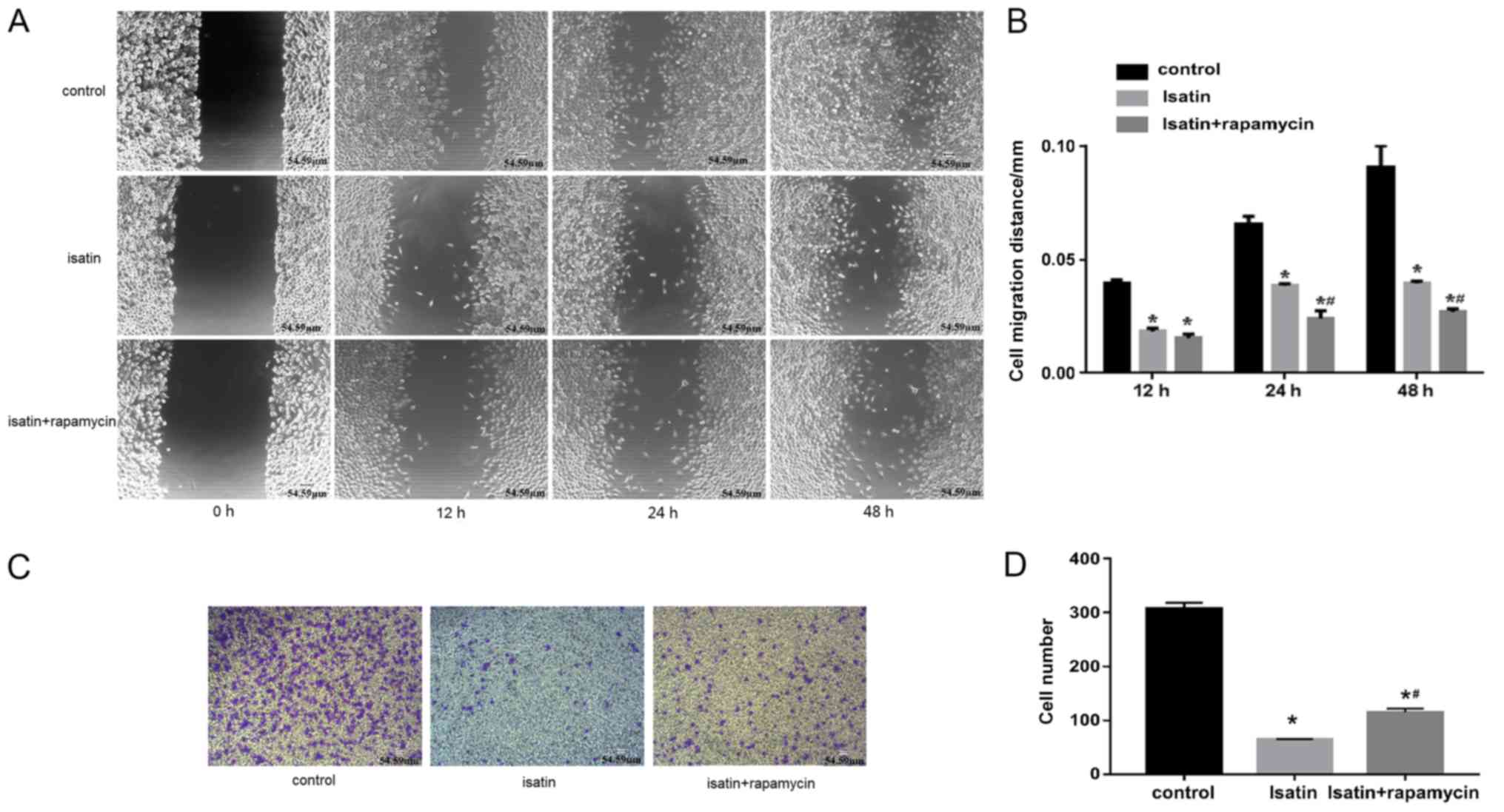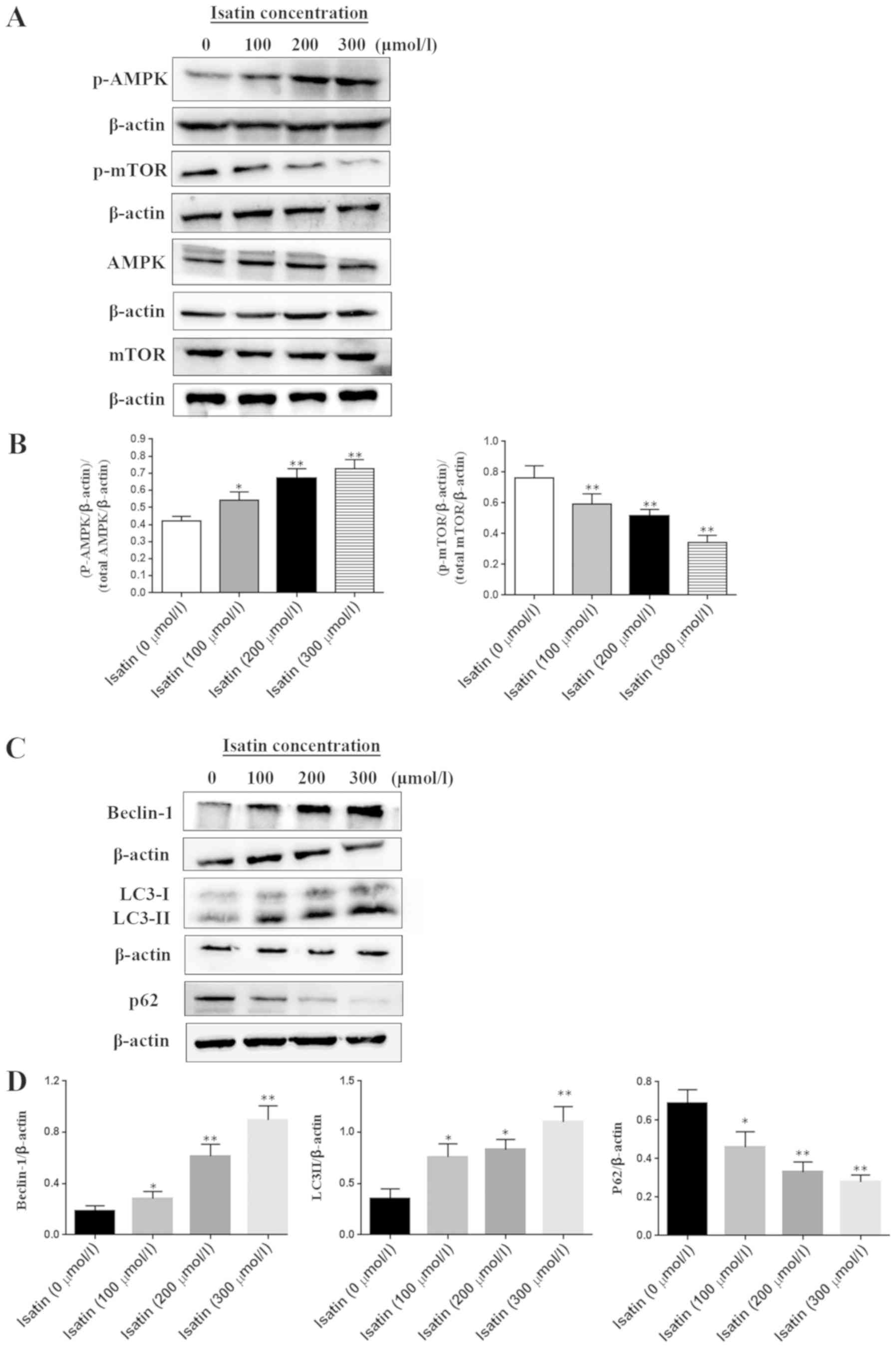|
1
|
Costa RA and Seuánez HN: Investigation of
major genetic alterations in neuroblastoma. Mol Biol Rep.
45:287–295. 2018. View Article : Google Scholar : PubMed/NCBI
|
|
2
|
Swift CC, Eklund MJ, Kraveka JM and
Alazraki AL: Updates in diagnosis, management, and treatment of
neuroblastoma. Radiographics. 38:566–580. 2018. View Article : Google Scholar : PubMed/NCBI
|
|
3
|
Kushner BH, Kramer K, LaQuaglia MP, Modak
S, Yataghene K and Cheung NK: Reduction from seven to five cycles
of intensive induction chemotherapy in children with high-risk
neuroblastoma. J Clin Oncol. 22:4888–4892. 2004. View Article : Google Scholar : PubMed/NCBI
|
|
4
|
Ceschel S, Casotto V, Valsecchi MG, Tamaro
P, Jankovic M, Hanau G, Fossati F, Pillon M, Rondelli R, Sandri A,
et al: Survival after relapse in children with solid tumors: A
follow-up study from the Italian off-therapy registry. Pediatr
Blood Cancer. 47:560–566. 2006. View Article : Google Scholar : PubMed/NCBI
|
|
5
|
Gowda R, Jones NR, Banerjee S and
Robertson GP: Use of nanotechnology to develop multi-drug
inhibitors for cancer therapy. J Nanomed Nanotechnol. 4(pii):
1842013.PubMed/NCBI
|
|
6
|
Verma M, Pandeya SN, Singh KN and Stables
JP: Anticonvulsant activity of Schiff bases of isatin derivatives.
Acta Pharm. 54:49–56. 2004.PubMed/NCBI
|
|
7
|
Gencer N, Sonmez F, Demir D, Arslan O and
Kucukislamoglu M: Synthesis, structure-activity relationships and
biological activity of new isatin derivatives as tyrosinase
inhibitors. Curr Top Med Chem. 14:1450–1462. 2014. View Article : Google Scholar : PubMed/NCBI
|
|
8
|
Hamaue N: Pharmacological role of isatin,
an endogenous MAO inhibitor. Yakugaku Zasshi. 120:352–362. 2000.(In
Japanese). View Article : Google Scholar : PubMed/NCBI
|
|
9
|
Minami M, Hamaue N, Hirafuji M, Saito H,
Hiroshige T, Ogata A, Tashiro K and Parvez SH: Isatin, an
endogenous MAO inhibitor, and a rat model of Parkinson's disease
induced by the Japanese encephalitis virus. J Neural Transm Suppl.
87–95. 2006. View Article : Google Scholar : PubMed/NCBI
|
|
10
|
Igosheva N, Lorz C, O'Conner E, Glover V
and Mehmet H: Isatin, an endogenous monoamine oxidase inhibitor,
triggers a dose- and time-dependent switch from apoptosis to
necrosis in human neuroblastoma cells. Neurochem Int. 47:216–224.
2005. View Article : Google Scholar : PubMed/NCBI
|
|
11
|
Sun W, Zhang L, Hou L, Ju C, Zhao S and
Wei Y: Isatin inhibits SH-SY5Y neuroblastoma cell invasion and
metastasis through MAO/HIF-1 α/CXCR4 signaling. Anti-cancer drugs.
28:645–653. 2017. View Article : Google Scholar : PubMed/NCBI
|
|
12
|
Xu P, Hou L, Ju C, Zhang Z, Sun W, Zhang
L, Song J, Lv Y, Liu L, Chen Z and Wang Y: Isatin inhibits the
proliferation and invasion of SH-SY5Y neuroblastoma cells. Mol Med
Rep. 13:2757–2762. 2016. View Article : Google Scholar : PubMed/NCBI
|
|
13
|
Zhang J, Jia Z, Li Q, Wang L, Rashid A,
Zhu Z, Evans DB, Vauthey JN, Xie K and Yao JC: Elevated expression
of vascular endothelial growth factor correlates with increased
angiogenesis and decreased progression-free survival among patients
with low-grade neuroendocrine tumors. Cancer. 109:1478–1486. 2007.
View Article : Google Scholar : PubMed/NCBI
|
|
14
|
Shaw RJ: LKB1 and AMP-activated protein
kinase control of mTOR signalling and growth. Acta Physiol (Oxf).
196:65–80. 2009. View Article : Google Scholar : PubMed/NCBI
|
|
15
|
Murtagh F and Legendre P: Ward's
Hierarchical agglomerative clustering method: Which algorithms
implement Ward's Criterion? J Classification. 31:274–295. 2014.
View Article : Google Scholar
|
|
16
|
Vrieze SI: Model selection and
psychological theory: A discussion of the differences between the
Akaike information criterion(ALC) and the Bayesian information
criterion (BIC). Psychol Methods. 17:228–243. 2012. View Article : Google Scholar : PubMed/NCBI
|
|
17
|
Ashburner M, Ball CA, Blake JA, Botstein
D, Butler H, Cherry JM, Davis AP, Dolinski K, Dwight SS, Eppig JT,
et al: Gene ontology: Tool for the unification of biology. The Gene
Ontology Consortium. Nat Genet. 25:25–29. 2000. View Article : Google Scholar : PubMed/NCBI
|
|
18
|
The Gene Ontology Consortium: The gene
ontology resource: 20 years and still Going strong. Nucleic Acids
Res. 47:D330–D338. 2019. View Article : Google Scholar : PubMed/NCBI
|
|
19
|
Kanehisa M, Sato Y, Furumichi M, Morishima
K and Tanabe M: New approach for understanding genome variations in
KEGG. Nucleic Acids Res. 47:D590–D595. 2019. View Article : Google Scholar : PubMed/NCBI
|
|
20
|
Kanehisa M, Furumichi M, Tanabe M, Sato Y
and Morishima K: KEGG: New perspectives on genomes, pathways,
diseases and drugs. Nucleic Acids Res. 45:D353–D361. 2017.
View Article : Google Scholar : PubMed/NCBI
|
|
21
|
Kanehisa M and Goto S: KEGG: Kyoto
encyclopedia of genes and genomes. Nucleic Acids Res. 28:27–30.
2000. View Article : Google Scholar : PubMed/NCBI
|
|
22
|
Livak KJ and Schmittgen TD: Analysis of
relative gene expression data using real-time quantitative PCR and
the 2(-Delta Delta C(T)) method. Methods. 25:402–408. 2001.
View Article : Google Scholar : PubMed/NCBI
|
|
23
|
Steeg PS and Theodorescu D: Metastasis: A
therapeutic target for cancer. Nat Clin Pract Oncol. 5:206–219.
2008. View Article : Google Scholar : PubMed/NCBI
|
|
24
|
Monclair T, Brodeur GM, Ambros PF, Brisse
HJ, Cecchetto G, Holmes K, Kaneko M, London WB, Matthay KK,
Nuchtern JG, et al: The International Neuroblastoma Risk Group
(INRG) staging system: An INRG Task Force report. J Clin Oncol.
27:298–303. 2009. View Article : Google Scholar : PubMed/NCBI
|
|
25
|
Morandi F, Corrias MV and Pistoia V:
Evaluation of bone marrow as a metastatic site of human
neuroblastoma. Ann N Y Acad Sci. 1335:23–31. 2015. View Article : Google Scholar : PubMed/NCBI
|
|
26
|
Chiang GG and Abraham RT: Targeting the
mTOR signaling network in cancer. Trends Mol Med. 13:433–442. 2007.
View Article : Google Scholar : PubMed/NCBI
|
|
27
|
Sarbassov DD, Ali SM and Sabatini DM:
Growing roles for the mTOR pathway. Curr Opin Cell Biol.
17:596–603. 2005. View Article : Google Scholar : PubMed/NCBI
|
|
28
|
Long X, Lin Y, Ortiz-Vega S, Yonezawa K
and Avruch J: Rheb binds and regulates the mTOR kinase. Curr Biol.
15:702–713. 2005. View Article : Google Scholar : PubMed/NCBI
|
|
29
|
Julien LA, Carriere A, Moreau J and Roux
PP: mTORC1-activated S6K1 phosphorylates Rictor on threonine 1135
and regulates mTORC2 signaling. Mol Cell Biol. 30:908–921. 2010.
View Article : Google Scholar : PubMed/NCBI
|
|
30
|
Rattan R, Giri S, Hartmann LC and Shridhar
V: Metformin attenuates ovarian cancer cell growth in an AMP-kinase
dispensable manner. J Cell Mol Med. 15:166–178. 2011. View Article : Google Scholar : PubMed/NCBI
|
|
31
|
Meijer AJ and Codogno P: AMP-activated
protein kinase and autophagy. Autophagy. 3:238–240. 2007.
View Article : Google Scholar : PubMed/NCBI
|
|
32
|
Divac Rankov A, Ljujic M, Petric M,
Radojkovic D, Pesic M and Dinic J: Targeting autophagy to modulate
cell survival: A comparative analysis in cancer, normal and
embryonic cells. Histochem Cell Biol. 148:529–544. 2017. View Article : Google Scholar : PubMed/NCBI
|
|
33
|
Tian X, Song HS, Cho YM, Park B, Song YJ,
Jang S and Kang SC: Anticancer effect of Saussurea lappa extract
via dual control of apoptosis and autophagy in prostate cancer
cells. Medicine (Baltimore). 96:e76062017. View Article : Google Scholar : PubMed/NCBI
|
|
34
|
Kon M, Kiffin R, Koga H, Chapochnick J,
Macian F, Varticovski L and Cuervo AM: Chaperone-mediated autophagy
is required for tumor growth. Sci Transl Med. 3:109ra1172011.
View Article : Google Scholar : PubMed/NCBI
|
|
35
|
Cheong H: Integrating autophagy and
metabolism in cancer. Arch Pharm Res. 38:358–371. 2015. View Article : Google Scholar : PubMed/NCBI
|
|
36
|
Zhang W, Li Q, Song C and Lao L: Knockdown
of autophagy-related protein 6, Beclin-1, decreases cell growth,
invasion, and metastasis and has a positive effect on
chemotherapy-induced cytotoxicity in osteosarcoma cells. Tumour
Biol. 36:2531–2539. 2015. View Article : Google Scholar : PubMed/NCBI
|
|
37
|
Ni HM, Bockus A, Boggess N, Jaeschke H and
Ding WX: Activation of autophagy protects against
acetaminophen-induced hepatotoxicity. Hepatology. 55:222–232. 2012.
View Article : Google Scholar : PubMed/NCBI
|
|
38
|
Athamneh K, Hasasna HE, Samri HA, Attoub
S, Arafat K, Benhalilou N, Rashedi AA, Dhaheri YA, AbuQamar S, Eid
A and Iratni R: Rhus coriaria increases protein ubiquitination,
proteasomal degradation and triggers non-canonical
Beclin-1-independent autophagy and apoptotic cell death in colon
cancer cells. Sci Rep. 7:116332017. View Article : Google Scholar : PubMed/NCBI
|
|
39
|
Kenific CM, Thorburn A and Debnath J:
Autophagy and metastasis: Another double-edged sword. Current
opinion in cell biology. 22:241–245. 2010. View Article : Google Scholar : PubMed/NCBI
|
|
40
|
Kabeya Y, Mizushima N, Ueno T, Yamamoto A,
Kirisako T, Noda T, Kominami E, Ohsumi Y and Yoshimori T: LC3, a
mammalian homologue of yeast Apg8p, is localized in autophagosome
membranes after processing. EMBO J. 19:5720–5728. 2000. View Article : Google Scholar : PubMed/NCBI
|
|
41
|
Liu WJ, Ye L, Huang WF, Guo LJ, Xu ZG, Wu
HL, Yang C and Liu HF: p62 links the autophagy pathway and the
ubiqutin-proteasome system upon ubiquitinated protein degradation.
Cell Mol Biol Lett. 21:292016. View Article : Google Scholar : PubMed/NCBI
|
|
42
|
Park JM, Huang S, Wu TT, Foster NR and
Sinicrope FA: Prognostic impact of Beclin 1, p62/sequestosome 1 and
LC3 protein expression in colon carcinomas from patients receiving
5-fluorouracil as adjuvant chemotherapy. Cancer Biol Ther.
14:100–107. 2013. View Article : Google Scholar : PubMed/NCBI
|
|
43
|
Ngabire D and Kim GD: Autophagy and
inflammatory response in the tumor microenvironment. Int J Mol Sci.
18(pii): E20162017. View Article : Google Scholar : PubMed/NCBI
|













